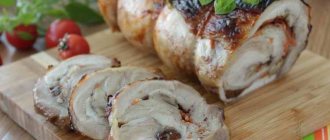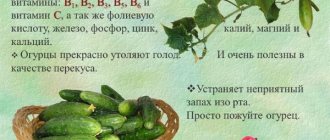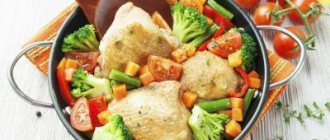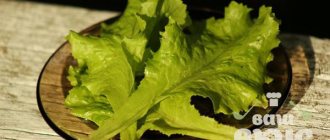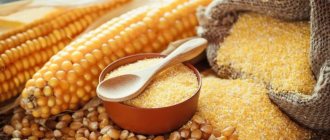What is bulgur
Bulgur is a cereal grain that is used as a staple food. This product is used to control blood sugar levels. Nutritionists highly value bulgur ( calorie content 346 kcal). Wheat product is rich in protein, iron, magnesium and fiber, so it is included in the daily diet menu.
Bulgor is generally available in four grain sizes: fine, medium, coarse and whole grain. Different sizes of this cereal are used for specific purposes. Finely ground burgol is used to make hot cereal for breakfast or added to dessert.
Medium is preferred for salads, stews, baked goods, and veggie burgers. Coarsely chopped varieties can be used for pilaf, casseroles, minced meat and salads. Whole grains are added to baked goods or in soups and stews.
Production technology
The traditional method of making bulgur is very labor-intensive. In the Middle East, a century ago, every family was engaged in collecting and processing the wheat crop in order to make a supply for the winter. The process began at the end of summer and consisted of several processing stages:
- Freshly harvested grain was sorted and thoroughly cleaned.
- They were loaded into large cauldrons with boiling water and boiled until the product became soft.
- Lay out on a wide flat surface in the sun. Roofs or terraces were often chosen.
- Drying lasted about three days. The wheat was turned several times a day to dry it more thoroughly.
- Then they peeled it in special mortars, beating it with a stone hammer.
- Dried again to separate the bran from the grain.
- To sift the husks, it was enough to throw the bulgur into the air or throw it off the roof; the wind would sift out the lighter particles.
- At the last stage, the grain was crushed using millstones and sifted, dividing into three groups depending on size.
Industrial production of bulgur is entirely based on this ancient technology, but the availability of machinery and automatic dryers makes it possible to process wheat all year round and in large volumes.
Varieties of cereals
Bulgur is divided into several types, depending on the size of the grain. There are two types in the grocery departments of Russian stores:
- Pilavlik – large or whole grain, suitable for preparing pilaf and stuffed dishes.
- Koftelik is finely crushed wheat. Used in salads, soups or baked goods.
Less common is medium-sized bulgur, which makes tasty side dishes and stews.
In countries where cereals are part of the national cuisine, for example in Turkey, there are many more varieties:
- wholegrain;
- coarse-grained;
- for pilaf;
- small for pilaf;
- for kufta;
- dark for pilaf;
- dark fine for kyufta;
- bran for pilaf;
- fine bran.
Bran is considered the most useful, since the preserved part of the grain shell adds vitamins and minerals to the product.
Koyden
How to choose and how much it costs
It is more convenient to choose bulgur when the packaging has a transparent window. It helps to distinguish a quality product:
- The consistency is crumbly, without sticky lumps.
- There is no debris, husk or grass particles in the cereal.
- The color is uniform from light golden to brown.
Dry bulgur should taste sweetish; bitter grains are not suitable for consumption.
The difference in shades is explained by the fact that producing countries use different varieties of wheat.
| Manufacturer | Cost, rub. |
| VkusVill, 350 g | 81,00 |
| Mistral, 500 g | 87,00 |
| Bravolli, 350 g | 93,90 |
Bulgur is now found in almost all Russian supermarkets in the cereal departments and in online stores.
How to store
Bulgur is stored in a dark place, preferably in an airtight container. Cereals are little exposed to:
- does not become damp at low humidity;
- does not attract insects.
The product remains fresh from 4 to 10 months, depending on the expiration date specified by the manufacturer.
Calorie content of the product - 342 kcal
Composition and calorie content of bulgur per 100 grams
The basis of the cereal is vitamins. Among them are:
- B9 (folic acid) – 27.0 mg;
- B4 (choline) – 28.1 mg;
- B3, PP (nicotinic acid) – 5.1 mg;
- B6 (pyridoxine) – 0.3 mg;
- B1 (thiamine) – 0.2 mg;
- B2 (riboflavin) – 0.1 mg;
- B5 (pantothenic acid) – 0.1 mg;
- K –1.9 mcg;
- E – 0.1 µg.
100 g of bulgur contains the following minerals and trace elements:
- potassium (410 mg);
- copper (335 mg);
- phosphorus (300 mg);
- magnesium (164 mg);
- calcium (35 mg);
- sodium (17 mg);
- iron (2.46 mg).
Composition and of dry and bulgur in water with and without oil per 100 g:
| Raw product | Boiled product without oil | Boiled product with oil | |
| Squirrels | 12.7 g | 2.14 g | 2.7 g |
| Fats | 1.5 g | 0.2 g | 3.2 g |
| Carbohydrates | 70.6 g | 15 g | 12.7 g |
| Calorie content | 339-364 kcal | 83 kcal | 101.9 kcal |
Fact! Two cups of cooked bulgur contain more than 10 grams of fiber.
Bulgur: BJU product
For proper diet planning and body weight regulation, it is important to know the nutritional value of the product. Let's consider the features of the nutritional and energy value of Mediterranean rice.
Like any other cereal products, bulgur is a rich source of carbohydrates, which form the basis of the body's energy metabolism. Unlike many other cereals that undergo long-term mechanical processing (couscous, semolina, white rice, etc.), Mediterranean rice is a complex (or slow) carbohydrate rich in fiber, dietary fiber and polysaccharides.
According to the recommendations of experts, in the absence of contraindications, slow carbohydrates should definitely be included in the diet of a person watching their weight. Unlike their fast “brothers”, they saturate the body for a long time, reducing appetite and the desire to eat something harmful, have a beneficial effect on the functioning of the digestive tract and store the body with the energy necessary for physical activity.
The optimal rate of carbohydrate absorption (or glycemic index - GI) for normal functioning of the body should be in the range between 16 and 60. For bulgur, this figure is 45 (boiled - 35), which puts it on the same level as buckwheat (55) and makes it much healthier than white rice (about 80). This indicator is especially important for diabetes and a sedentary lifestyle.
How many carbohydrates are in bulgur? 100 gr. dry cereal contains 63.4 grams of components of this group or 81%. Boiled, 100 gr. Mediterranean rice accounts for about 15 grams. compounds, which is a sufficient amount for a proper daily diet.
How much protein and fat is in bulgur? These compounds are presented in volumes of 12.3 and 1.3 g. respectively per 100 gr. dry cereal or 3 and 0.2 gr. for the same amount of boiled cereal.
Thus, the ratio of carbohydrates, proteins and fats in the product is as follows: 5.2: 1: 0.1.
Now let's look at the energy value of bulgur. The calorie content of dry cereal is 342 kcal per 100 g, which, in turn, represents approximately 15% of the daily human consumption. It should be remembered that during the cooking process the product increases in size up to 3-4 times and this indicator changes. The calorie content of Mediterranean rice boiled in water is approximately 35 kcal per 100 grams.
If we take into account how long it takes to digest bulgur (like other products made from durum wheat - about three hours), then the combination of dietary fat and calorie content in the product is optimal for a healthy diet.
To the above, you can also add the rich chemical composition of bulgur, which gives it other beneficial properties besides providing energy to the body. Cereals contain in significant quantities:
- vitamins (B1, B5, B6, PP, A);
- minerals (potassium, magnesium, phosphorus, iron, manganese, zinc);
- dietary fiber and cellulose.
This composition of vitamins, macro- and microelements ensures the normal functioning of the nervous system, strengthens the immune system, and improves the condition of blood vessels, skin and hair. These components are part of hormones and enzymes that are necessary for the proper functioning of all systems and organs of the human body.
Properties of bulgur
Bulgur - benefits and harm for the body. Cereals are rich in slowly digested, complex carbohydrates. It contains a huge amount of protein and low fat. Potassium is a mineral that promotes heart function, strengthens bones, and helps in muscle contraction. One glass of cereal contains 124 mg of potassium.
Zinc is an essential mineral that helps protein synthesis, immunity, and cell division. One glass of cereal contains a little more than 1 mg of zinc. Vitamin B3, which is found in burgol, helps break down proteins and fats for energy.
Benefit
The effect of burgol on the body:
- Has an anti-inflammatory effect.
- Reduces the likelihood of developing metabolic syndrome (obesity, high blood pressure).
- Eating bulgur grains daily reduces the risk of developing type 2 diabetes.
- Relieves constipation and cleanses the digestive tract.
- Serves as a prevention of cholelithiasis, heart attack, stroke, heart and kidney failure.
- Reduces the risk of cancer. The insoluble fiber in bulgur helps protect against breast cancer, which is why women are advised to include this product in their diet during menopause.
- Helps in the formation of connective tissues and proper blood clotting.
- Regulates blood pressure.
- Struggling with excess weight.
- Protects children from developing diseases such as asthma.
For diabetes
It is recommended to take the cereal as a main dish or add it to salads. It should be boiled in water (ratio 1x3), a little salt is allowed. The porridge should be crumbly. Cutlets or meatballs are made from it, and it serves as an ingredient in first courses.
It is not recommended to abuse this product for type 2 diabetes, and it is better to exclude it from the diet.
Attention! The maximum amount of bulgur eaten per week should not exceed 2 times.
For pancreatitis
In case of exacerbation of the disease, the use of bulgur is prohibited. This is explained by the fact that the dietary fiber contained in this cereal irritates the mucous membrane of the digestive organs, as a result of which the inflammatory process increases and spasms occur in the pancreas ducts. Irritable intestines provoke the appearance of increased gas formation, colic, and nausea.
If a person has a chronic form, then doctors recommend consuming bulgur 7 days after the symptoms of irritable bowel syndrome disappear. The daily norm is 150-200 g of ready-made food. It is allowed to consume this cereal only in boiled form (in water or vegetable broth) 2 times a week.
Important! To prepare porridge (1 serving) you need 40 g of bulgur. It expands well during cooking.
For gastritis
If a person has gastritis during an exacerbation, then bulgur is also contraindicated. During any other phase of the disease, consumption of this cereal is permitted.
When gastritis occurs in combination with high acidity, cereals must be cooked only in water and consumed in a viscous form (using a sieve or blender) 3-4 times a week.
For cholecystitis
Bulgur is allowed for this disease in the form of vegetable soup or porridge with milk. Doctors recommend eating small portions often and not using fat (lard, butter and vegetable oil) when preparing this cereal, and not overusing spices.
Attention! For all gastrointestinal diseases, consume bulgur only warm.
Possible harm and contraindications
Bulgur has many positive properties, but it can also be harmful to the body. Cereals contain gluten (an allergen), which not all people can process, so the use of this product is contraindicated for them.
During the diet, you can eat this cereal no more than 3 times a day in small portions. If a person begins to suffer from flatulence, diarrhea, weakness and other unusual symptoms, then one should immediately abandon bulgur. This may be a sign of an allergic reaction to gluten.
Cereals are contraindicated for consumption during periods of exacerbation of pancreatitis or gastritis and other inflammatory processes of the stomach, as well as for type 2 diabetes mellitus.
Beneficial features
Including bulgur dishes in the daily menu has a positive effect on the nervous system. This is due to the high content of B vitamins, which are important for its normal functioning. A significant concentration of mineral salts in cereals allows you to normalize metabolic processes, heal the skin tone and add shine to your hair. The high content of dietary fiber makes it useful to use this cereal for regular and high-quality cleansing of the intestines from accumulated deposits and toxins that are toxic to the body.
It is necessary to take into account that bulgur is a product whose consumption leads to rapid saturation. At the same time, its conversion to glucose is very slow. Therefore, eating dishes with bulgur is useful for those who regularly have to experience significant overload or engage in professional sports.
The glycemic index of this cereal is 45 units, which is why consuming the product does not cause sudden changes in the level of insulin in the blood; it can be eaten if you have diabetes, as well as during a diet.
For women and men
Due to the high content of mineral salts and beneficial vitamins, regular consumption of dishes with bulgur helps improve health and appearance. Cereals help normalize digestion and improve the intestinal microflora. These properties have a positive effect on the condition of the skin. The structure of the hair also improves: it becomes soft and manageable, and grows faster.
Eating dishes with bulgur helps to normalize skin tone. At the same time, cereals can not only be consumed, but also used as an external remedy. This product will be an effective base for homemade scrub mixtures. After such a procedure, the epidermis is not only cleansed of impurities and keratinized particles, but also smoothed out, and small wrinkles are eliminated.
Cleansing the skin with bulgur is especially useful for older women. This product slows down the process of maturation of the epidermis and gives elasticity.
To prepare a homemade anti-cellulite scrub you will need:
- 100 g bulgur;
- 50 ml olive oil.
Preparation and use:
- Grind the cereal in a coffee grinder.
- Combine with oil.
- While taking a shower, rub the scrub onto problem areas.
For men, eating dishes with bulgur is useful for activating libido and improving sperm quality. Regular consumption of cereals can significantly increase the number of sperm and their motility.
During pregnancy and lactation
The high content of folic acid makes bulgur especially useful for pregnant women. Eating such dishes will reduce the risk of miscarriage and ensure the proper development of the organs of the unborn child. Adding this product to the menu 2-3 times a week is useful in the first two trimesters of pregnancy. But at a later date, the volume of cereal must be reduced so as not to provoke flatulence.
Porridge with bulgur is recommended for women who have already become mothers. It is rich in many beneficial substances that will significantly improve the quality of breast milk. But this product should be introduced into the diet at least 2 months after birth. This restriction is due to the presence of gluten in cereals, which can cause allergies in a fragile baby.
Bulgur can be introduced into a woman's diet during lactation only with the permission of a doctor and in small quantities.
A nursing mother should prepare porridge with this cereal using water, preferably without adding sugar or salt. To improve the taste, you can add a small amount of butter to the dish.
Bulgur in baby food
You can include cereals in your child’s regular menu when the danger of developing an allergy to gluten has passed. It is optimal to do this at the age of 1.5-2 years. For younger children, porridge with bulgur will be too difficult to digest. It often causes discomfort in the baby's intestines.
According to experts, it is best to add the boiled product to first courses at the initial stage of complementary feeding. Then you can cook nutritious porridges with bulgur or use it as a side dish for main courses.
Porridge with pumpkin
To prepare a tasty and healthy meal for your child you will need:
- water - 1 tbsp. ;
- milk - 1 tbsp;
- raw bulgur - 100 g;
- pumpkin - 100 g;
- salt, sugar - to taste;
- butter - 5 g.
Preparation:
- Mix the cereal with water and boil until semi-soft.
- Grind a piece of pumpkin using a grater.
- Add the remaining ingredients to the porridge and mix.
- Cook for another 10 minutes until the bulgur is soft.
- Place butter on a plate before serving.
Benefits for those losing weight
Bulgur is especially popular among those who want to lose weight and people who adhere to a healthy diet. This is due to its ability to quickly saturate and its positive effect on digestion and intestinal cleansing.
At the same time, the high calorie content of cereals is not an obstacle for those who are planning to lose weight. Despite the fact that in its raw form it is high in calories, in a cooked product its energy value is reduced by more than 4 times. As a result, the finished dish contains significantly fewer calories than buckwheat or rice porridge.
According to nutritionists, bulgur will be a good addition to soups when following a weight loss diet or can act as a side dish or an independent dish.
Proportions and cooking features
Bulgur is usually boiled, like rice or other grains, but it can also be fried or baked with vegetables. Because this product is already partially cooked, it takes less time to cook than other whole grains and has a longer shelf life. You also don’t have to rinse the cereal before cooking, unless indicated on the package.
When cooking cereals, maintain a ratio of 1 to 2 and pour it into boiling water and continue cooking for 15 minutes. Then the fire is turned off and the pan is wrapped in a warm towel or blanket. There is another method of preparation: the cereal is first fried in boiling oil and then boiled. This option will give the dish a nutty flavor.
Bulgur goes well with stewed meat, vegetables (carrots, cucumbers, radishes, sweet peppers, onions), raisins, tomatoes, beans, walnuts, spinach.
Compound
Whole grain bulgur has an incredibly high value, the calorie content per 100 g of which is very low. Thanks to minimal processing of the shell, saturated with microelements, all useful substances remain in the cereal.
100 grams of dry cereal contains 8 grams of fiber, 12.5 grams of proteins, 70 grams of carbohydrates, and 1.7 grams of fat. Calorie content is 350 kcal.
During the weight loss process, it is worth preparing bulgur; the calorie content per 100 grams of boiled cereal is, as already mentioned, 83 calories, so during a diet it is an indispensable product, thanks to which you can easily satisfy your hunger. This cereal is a godsend for overweight people and people with diabetes. But excessive consumption of this product is not recommended for people with chronic gastritis.
Delicious and healthy recipes
Porridge
Ingredients:
- 150 g cereal;
- 300 ml milk;
- 200 ml water;
- 180 g apples;
- 45 g dried apricots;
- 55 g butter;
- salt and sugar (to taste)
Preparation:
- Using butter, draw a line across half of the multicooker bowl. This is the limit for milk.
- Place the rest of the butter on the bottom.
- Turn on the multicooker to the “Frying” or “Baking” mode.
- Place the bulgur in the bowl and fry it for 3 minutes.
- Mix milk with water (it must be boiled) and pour in the cereal. Salt, add sugar. Select a program for cooking porridge. Cooking time: 20 minutes.
- While the porridge is preparing, pour hot water over the dried apricots for 10 minutes. Squeeze and chop with a knife.
- The apple must be washed, blotted from moisture with a napkin, peeled and cored, and grated on a fine grater.
- Place the prepared dried fruit and apple into the slow cooker and mix.
- Set the “Heating” mode for 25-30 minutes.
Children eat this porridge with pleasure.
Fact! It is recommended to introduce bulgur into a child’s diet no earlier than 2 years.
Flavorful bulgur side dish
Ingredients:
- bulgur – 150 g;
- water – 0.5 l;
- tomato paste – 2 tbsp. (without slide);
- dried vegetables – 50 g;
- dried mint – 1 tsp;
- dried basil – 1 tsp;
- paprika – 2 tbsp;
- greenery.
Preparation:
- Pour the bulgur into the container, add salt and cook for 20 minutes.
- Add spices: tomato paste, dried vegetables, mint, basil.
- Serve the dish hot or warm with finely chopped herbs.
Vegetarian pilaf with eggplant
Ingredients:
- bulgur – 1.5 cups;
- onions – 2-3 pcs.;
- carrots – 2-3 pcs.;
- eggplant – 2-3 pcs.;
- bell pepper – 3 pcs.
- garlic – 4 cloves;
- fresh herbs;
- salt, pepper (to taste).
Preparation:
- Fry finely chopped onion over low heat with a small amount of oil.
- Chop the carrots in a convenient way and saute with onions.
- Transfer the onions and carrots to the cauldron.
- Cut the eggplant into cubes, finely chop the bell pepper and fry over high heat. Transfer to a cauldron.
- Simmer vegetables in olive oil with spices for 3-5 minutes.
- Add bulgur to the cauldron and stir thoroughly.
- Pour the contents of the cauldron with 2 cups of hot water and cover with a lid.
- Place the cauldron in a preheated oven (180°) for 15 minutes.
- Serve the dish hot with finely chopped herbs.
Bulgur salad: a simple and tasty recipe
Ingredients:
- cucumber – 2 pcs.;
- tomato – 3 pcs.;
- onions – 1-1.5 pcs.;
- boiled chickpeas – 1/2 cup;
- bulgur – 1/2 cup.
- lemon juice – 2 tbsp;
- fresh herbs;
- salt pepper.
Preparation:
- Pour the cereal into a glass container and pour 2-2.5 cups of boiling water, cover with a lid and let it steam for 30 minutes. Cool.
- Chop all the vegetables, place them in a bowl along with the chickpeas, season with lemon juice, mix well.
- Beat the bulgur and add it to the vegetable mixture and stir.
- Salt, pepper, add herbs and mix.
Soup with bulgur and lentils
Ingredients:
- bulgur – 100 g;
- lentils – 100 g;
- tomatoes – 200 g;
- vegetable oil – 1 tbsp;
- spices.
Preparation:
- Rinse the lentils well with water. Soak it in cold water for 3-5 hours. If the lentil variety is hard, then it is soaked for 10 hours.
- Place the prepared lentils in a saucepan, add water and bring to a boil.
- Fry the bulgur in vegetable oil for 2-3 minutes. Add chopped tomatoes, salt and pepper and simmer covered for 5 minutes.
- Transfer all ingredients from the frying pan to the saucepan, add water. As soon as it boils, remove from heat.
- Serve hot with herbs. You can add sour cream.
Quail soup
Ingredients:
- quail – 1 pc.;
- onions – 2 pcs.;
- carrots – 2 pcs.;
- potatoes – 6 pcs.;
- bulgur – 200 g;
- quail eggs – 12 pcs.;
- bay leaf – 2 pcs.;
- salt, pepper, herbs, spices.
Preparation:
- Boil quail broth, add bay leaf, salt and pepper.
- Cut the potatoes and put them in the broth.
- After 15 minutes add bulgur.
- At this time, boil the eggs.
- Serve the soup with herbs and 2 quail eggs, previously cut in half.
Pumpkin and shrimp soup with bulgur
Ingredients:
- pumpkin – 1/2 part;
- fresh thyme – 2 bunches;
- carrots – 2-3 pcs.;
- onions – 2-3 pcs.;
- bulgur – 3 tbsp;
- cream 20% - 0.5 cups;
- coconut milk – 2.5 tbsp;
- chicken broth – 2 l;
- white wine – 5 tbsp;
- shrimp – 2 pcs.;
- garlic – 2-3 cloves;
- honey – 1-1.5 tbsp;
- chili pepper - half;
- salt, pepper, spices (to taste).
Preparation:
- Peel the pumpkin and cut into 5x5 cubes. Place in a saucepan, add sugar, and pour wine. Add 2 sprigs of thyme, spices, garlic, honey. Cover with foil and place in a preheated oven at 150° and bake for 40 minutes.
- Cut the carrots and onions into strips and fry in a frying pan until golden brown.
- Remove the prepared pumpkin from the oven, add the roasting mixture, and pour in the prepared broth. When it boils, add cream.
- Cook the bulgur over low heat for 20 minutes. (calculation of cereals to liquid: 1x2).
- When the broth boils, remove the pan from the heat and beat with a blender.
- Cut the shrimp in half, fry them in hot olive oil, add chili pepper.
- Serve the soup hot with shrimp and herbs.
How to choose and store correctly
Depending on the purpose of preparation, different varieties are chosen:
- Coarse grinding - for dietary nutrition;
- Medium grind - for preparing side dishes, soup;
- Fine grind - for adding to salads.
When choosing a product, you should pay attention to the appearance: the grains must be solid, of the same size and color, without impurities. The taste is sweet, without the smell of mold or bitterness.
The cereal is poured into an airtight (glass or metal) container and stored in a cool, dark place for 4 to 10 months.
How is bulgur used in cosmetology?
This product is also used in cosmetology. It is an ingredient in masks and scrubs. Masks have a rejuvenating effect and get rid of the first wrinkles. Scrubs are used to combat cellulite. For facial skin, bulgur is used only in boiled form.
Scrub for cellulite
Mix 100 g of fine or medium-ground cereal with 50 ml of olive oil. Apply to thighs. Hold for 5 minutes. Massage for 10 minutes and rinse with running water. Do this scrub every other day in a course (10-15 times).
Fact! It is better to do the scrub after a sauna or hot bath so that the skin is steamed.
Mask
Boil bulgur in milk (100-150 ml), cool. Add 1 yolk, 1 tsp honey. Mix the ingredients until smooth, apply to face and décolleté for 20 minutes, rinse with running water. You can use the mask daily for 12 days. Afterwards a break is taken for a month, then the course is repeated. The same mask can be applied to your hands.
Use of bulgur in cooking
We will begin this part of our “presentation” of bulgur by indicating the approximate age of this product – about 4 thousand years. During this time, bulgur managed to win the love of Armenians, Azerbaijanis, Hindus, Turks and even Greeks. The culinary experts of these peoples know that from this product you can create whatever your heart desires: from banal porridge on water to delicious pilaf and tabbouleh salad.
Unfortunately, the format of this article does not provide for a detailed description of recipes for preparing bulgur dishes, but listing some of them is our sacred duty.
Here is a short list of dishes in which bulgur will obviously not be out of place: soups, pilafs, “Tabule” and “Kisir” salads, side dishes for meat and fish, stuffed vegetables and grape leaves, porridges with various additives and dressings, as well as baked goods and all kinds of Dessert. Yes, honey, nuts, sugar, dried fruits and sweet syrups go great with bulgur.
In general, bulgur is flour, cereal and porridge... from an axe. Only even tastier!
Features of storing cereals
year when unopened . After opening the package, the bulgur should be poured into an airtight glass container and placed in a dark, dry place. Store in this form for no more than 4 months.
Bulgur is sure to satisfy most of the basic needs of the body due to its rich chemical composition. It replaces rice well in pilaf and is an ingredient in salads and first courses. It can also be used instead of breadcrumbs for meatballs. Wheat in this form goes well with vegetables, chopped fresh and dried herbs, olive oil and lemon juice. Cereals give healthy skin.
The benefits and harms have been proven . The inclusion of this cereal in the diet should be correct and gradual. Children can be given cereals from the age , when the digestive system is already mature to process gluten. People with gastrointestinal diseases should use bulgur with caution and consult their doctor before use.
So, what are the benefits of bulgur?
Bulgur is good because it contains almost the full spectrum of B vitamins (with the exception of B12). This means that people who use this product are able to cope well with nervous tension and any troubles in life.
In addition, this cereal contains a fair amount of fiber. Well, the main task of fiber in our body is “general cleaning” in the intestines. Moreover, during this “cleaning”, exclusively toxic deposits leave the body. Because fiber also serves as delicious food for our symbiotic microflora. As a result, the garbage goes away, and useful substances freely enter the bloodstream.
Bulgur is excellently satiating, but is rather slowly converted into glucose, which contributes to the normal functioning of the body while simultaneously breaking down fat reserves and reducing sugar levels in the bloodstream.
In general, bulgur contains everything most necessary for a modern person - cereals can cleanse and nourish the human body without compromising the figure and health. And this product literally costs pennies.
Harm and contraindications
Despite its rich chemical composition, high content of macro- and microelements, vitamins and other useful substances, bulgur cannot be recommended for uncontrolled consumption. This cereal, like other products, has contraindications.
Best materials of the month
- Coronaviruses: SARS-CoV-2 (COVID-19)
- Antibiotics for the prevention and treatment of COVID-19: how effective are they?
- The most common "office" diseases
- Does vodka kill coronavirus?
- How to stay alive on our roads?
First of all, this cereal contains gluten. Consequently, people suffering from individual intolerance to it are prohibited from consuming bulgur. Celiac disease can manifest as dyspepsia and severe weakness.
You should also take into account the high calorie content of this cereal. Those who want to get rid of extra pounds, as well as people with disorders of the endocrine system, should not get carried away with dishes made from it.
Gastritis with high acidity and inflammatory diseases of the gastrointestinal tract are also contraindications for consuming bulgur.


